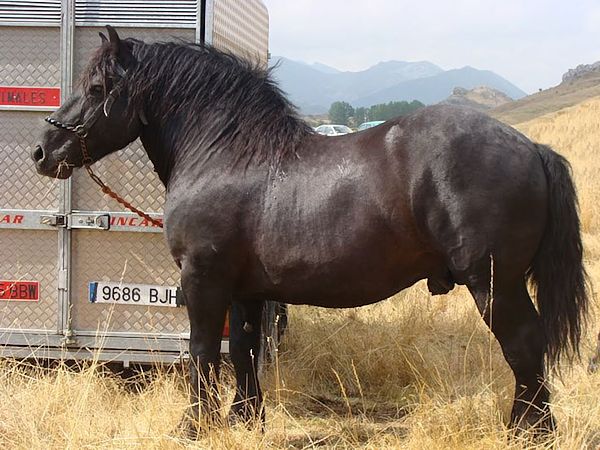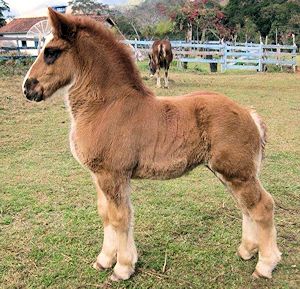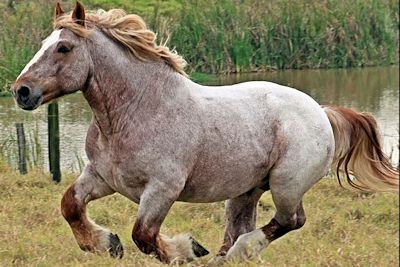The Breton Horse breed was developed during the Middle Ages. There were two strains; the Sommier Breton and the Rossier. At the end of the 19th century, another development was called the Draught Breton.

There are three distinct subtypes of the Breton, each coming from a different area of Brittany. The Corlay Breton is the smallest type, and is generally used for light draft and under saddle work.
The Postier Breton is used for harness and light farm work.
The Heavy Draft Breton is the largest subtype, and is generally used for the hardest draft work.
This horse breed has been used in military, draft and agricultural capacities. It also has been used to improve and create many other draft breeds, and to produce mules.
Origin: local horse of Britanny, France.
Colors: The coat of the Breton is generally chestnut colored and with a sand colored tail and mane. The other coat colors that are found are bay, blue roan, red roan or grey.

Height: The height of the Breton horse can be anywhere between 14.3 – 16.2 hands depending on the category it belongs to.
Conformation: They have a well proportioned head with a straight profile. They have a short neck which is strong. The withers of this breed are muscular. The chest is also muscular, but wide. The long shoulders are sloping and the broad back is short. This animal has a sloping croup. The legs which are short are very powerful with joints that are broad and hooves which are well developed. The legs of the Breton horse are feathered.
Character: easy-going, sociable breed.
Uses: The Breton horses are sturdy animals that are used for a variety of purposes. Primarily, these horses are used as draft horses for farming. At times, they are also used to pull coaches. Today, they are also used for military purposes, pleasure riding, and are also bred for their meat.

History: The history of the Breton horse dates back thousands of years. These horses that have been found in the Breton mountains have their time of appearance shrouded in mystery. While one school of thought states that these horses appeared on the European soil during Aryan migration, the other states that this breed descended from the horses bred by Celtics.
The horses were in great demand for military purposes during the Middle ages due to their walk. From then to the early part of the 19th century, this breed was cross bred with various other breeds to improvise the existing breed.
In 1909, the studbook for the Bretons came into existence. Today, the breeding of the Breton horse has spread to various parts of the world.
